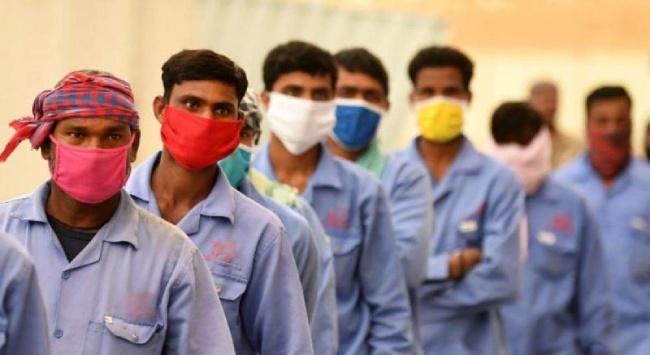Summary
India is the world’s largest exporter of labour. Its recent labour migration agreements with countries like Israel and Taiwan raise questions between countries that receive Indian workers and how it might affect India in the future.
On 16 February 2024, India and Taiwan signed a memorandum of understanding (MOU) to facilitate the movement of Indian labour to Taiwan. This agreement with Taiwan, interestingly, was not an aberration. India has been increasing its labour diplomacy in recent years by signing agreements with other countries like Japan and Israel. This MOU adds to intensifying economic ties with Taiwan, which include US$8 billion (S$10.8 billion) in trade in 2022 and US$4 billion (S$5.4 billion) in investment from Taiwanese businesses.
Why is India exporting its labour abroad? Labour gaps are a big reason. Taiwan, for instance, has an ageing population and appears keen to fill specific labour gaps. Currently, there are approximately 700,000 foreign workers in the country, with the majority working in the manufacturing, agriculture and construction industries. They also work in the care sector, mainly as domestic help for the elderly. This group largely comes from Vietnam, Indonesia, Thailand and the Philippines. India will add to this growing cohort. Similarly, Japan has an ageing population and is looking to bring in more Indian labour under its Specified Skilled Workers Programme. The Gulf Cooperation Council states increasingly rely on Indian labour, with over nine million Indian workers being employed in the oil and construction industries across the Middle East. India has also sent its labour to Israel, given the growing deficit of Palestinian labour from the unfolding Gaza crisis.
For India, these strategic labour partnerships manifest through the Labor Manpower Agreements (LMAs), as with the Gulf states, and the Migration and Mobility Partnership Agreements (MMPAs) with the United Kingdom, Germany and France. The LMAs are geared towards “one-way mobility” while the MMPAs are “reciprocal in nature” and cover mobility between both countries. The MMPAs cover a range of movements, including short-stay visas and the mobility of students, professionals and researchers in various sectors. Between January 2015 and March 2023, India signed 17 agreements, including LMAs, MMPAs and Declarations of Intent, a marked increase between 1985 and 2014 when only five were signed.
While the LMAs and MMPAs are specific to migration and manpower, an MOU does not have any formal guidelines on what it encompasses and remains up to the countries to draw those boundaries. The Taiwan-India MoU allows for more diverse arrangements and unique collaborations between both countries. The increasing labour movement, vis-à-vis Taiwan, is the upshot of growing economic convergence with India. In 2016, Taiwan instituted the ‘New Southbound Policy’ to create deeper ties with other countries by expanding its supply chains and regional markets. This policy covers ‘people-to-people’ links and increased economic ties with other emerging economies.
Broadly, however, this emergent labour diplomacy also reflects rising interdependence between India and select recipient countries. After the Cold War, India’s initial interest in Taiwan was trade-related. This focus has since progressed to the recent MoU which involves the movement of Indian workers into Taiwan and could pave the way for deeper economic ties. Former Taiwanese foreign minister, James Huang, the first director of the ‘New Southbound Policy’ called India “the ‘jewel’ in its external economic strategy”. The ‘New Southbound Policy’ aligns with India’s 2014 ‘Act East Policy’ that seeks to deepen India’s footprint in East Asia.
Benefits aside, such labour agreements could also generate troubles. For instance, Taiwan’s Labour Minister Hsu Ming-chun disparaged the racial background of Indian labour. In Taiwanese politics, the entry of Indian workers has divided ministers, especially during the recent presidential elections. Though the Taiwanese minister apologised for his comments, the incident raised questions regarding the treatment of Indian labour in Taiwan. Questions also remain about the sustainability of exporting Indian labour abroad. In the event the LMAs, MMPAs or related migration agreements break and India has to repatriate labour, deficits are created in the recipient countries that could undermine specific sectors. For the Gulf states, the oil and construction industries would be impacted. For Japan and Taiwan, their ageing populations will ultimately lead to a shortage of qualified workers for all jobs.
For the short-term, however, such concerns appear to be trumped by the benefits. Importantly, India continues to benefit from growing inward remittances, which was an estimated US$125 billion (S$168.75 billion) in 2023. These remittance pathways could also serve to increase Indian investments in these countries. While China does this through direct investments and by monopolising sectors like critical minerals, India can use its labour abroad to develop and cement economic partnerships with strategic partners like Japan, Israel and Taiwan.
. . . . .
Dr Karthik Nachiappan is a Research Fellow at the Institute of South Asian Studies (ISAS), an autonomous research institute in the National University of Singapore (NUS). He can be contacted at karthiknach@nus.edu.sg. Ms Tanujja Dadlani is a research analyst at the same institute. She can be contacted at tanujjad@nus.edu.sg. The authors bear full responsibility for the facts cited, and opinions expressed in this paper.
Pic Credit: @Imvgopi Twitter Account
-
 More From :
More From :
-
 Tags :
Tags :
-
 Download PDF
Download PDF


